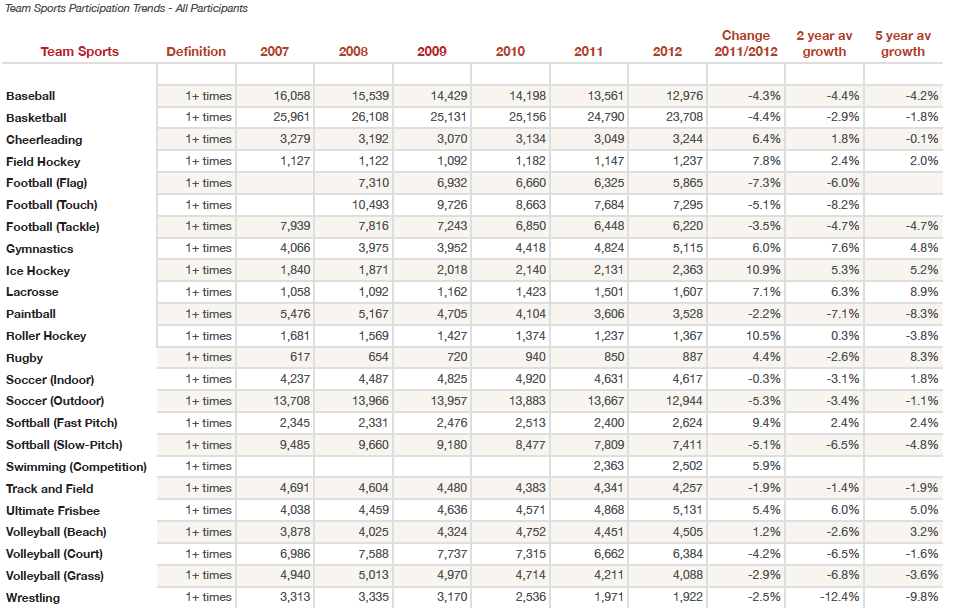According to the latest U.S. Trends in Team Sports Report published by SFIA, 15 of 24 teams sports grew in core participation. At the same time, traditional team sports such as football, baseball, and basketball saw declines.
Compared to 2011, which saw an increase in only 5 of the 24 sports, the surge in core participation in the most current U.S. Trends in Team Sports Report is proof of the growing trend of specialization in team sports, according to SFIA. While there are more quality participants (core), the report also revealed the decrease in overall (casual) team sports participants over the last five years. Since 2008, team sports have lost 16.1 million participants or 11.1 percent of all team participants, measured by those who played at least once a year.
Football (tackle, flag, and touch), baseball, and basketball have been the three sports most affected by the loss of overall participants the past five years. Growth sectors have been seen in non-traditional sports. Notably, the largest sectors with positive growth since 2008 are Gymnastics (5.1 million participants in 2012), Ultimate Frisbee (5.1 million), Indoor Soccer (4.6 million) and Beach Volleyball (4.5 million).
The sport with the greatest gain in core participants was roller hockey, up 22.1 percent; followed by softball (fast pitch), 18.3 percent; rugby, 18.2 percent; volleyball (beach), 13.7 percent; cheerleading, 10.8 percent; ice hockey, 9.1 percent; field hockey, 7.8 percent; ultimate Frisbee, 7.5 percent; and football (touch), 6.9 percent. Others seeing more modest gains were football (flag), gymnastics, lacrosse, paintball, soccer, softball (slow-pitch). Among the major team sports, core participation was down 3.3 percent in baseball, 2.7 percent in football (tackle), 2.3 percent in soccer (outdoor), and 2.1 percent in basketball.
“The degradation of the casual team sports participant cannot be ignored,” said VJ Mayor, SFIA’s director of communications & research. “Casual participation is the gateway to more core participants. We have already begun to see a decline in core participation among traditional team sports over the last five years which is alarming. The drop could be influenced by several factors including increased single sport specialization, overuse injury, athlete burnout, safety concerns, and the marginalization of the recreation player. Fortunately, the industry is aware of the magnitude of the issue and is coalescing to address it with initiatives like PHIT America and a participation initiative borne out of the SFIA Industry Leaders Summit.”
The SFIA U.S. Trends in Team Sports Report also explores core and casual participation around key demographic data such as age, gender, and income, as well as childhood participation, fandom in team sports, and churn rate.















